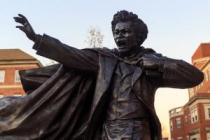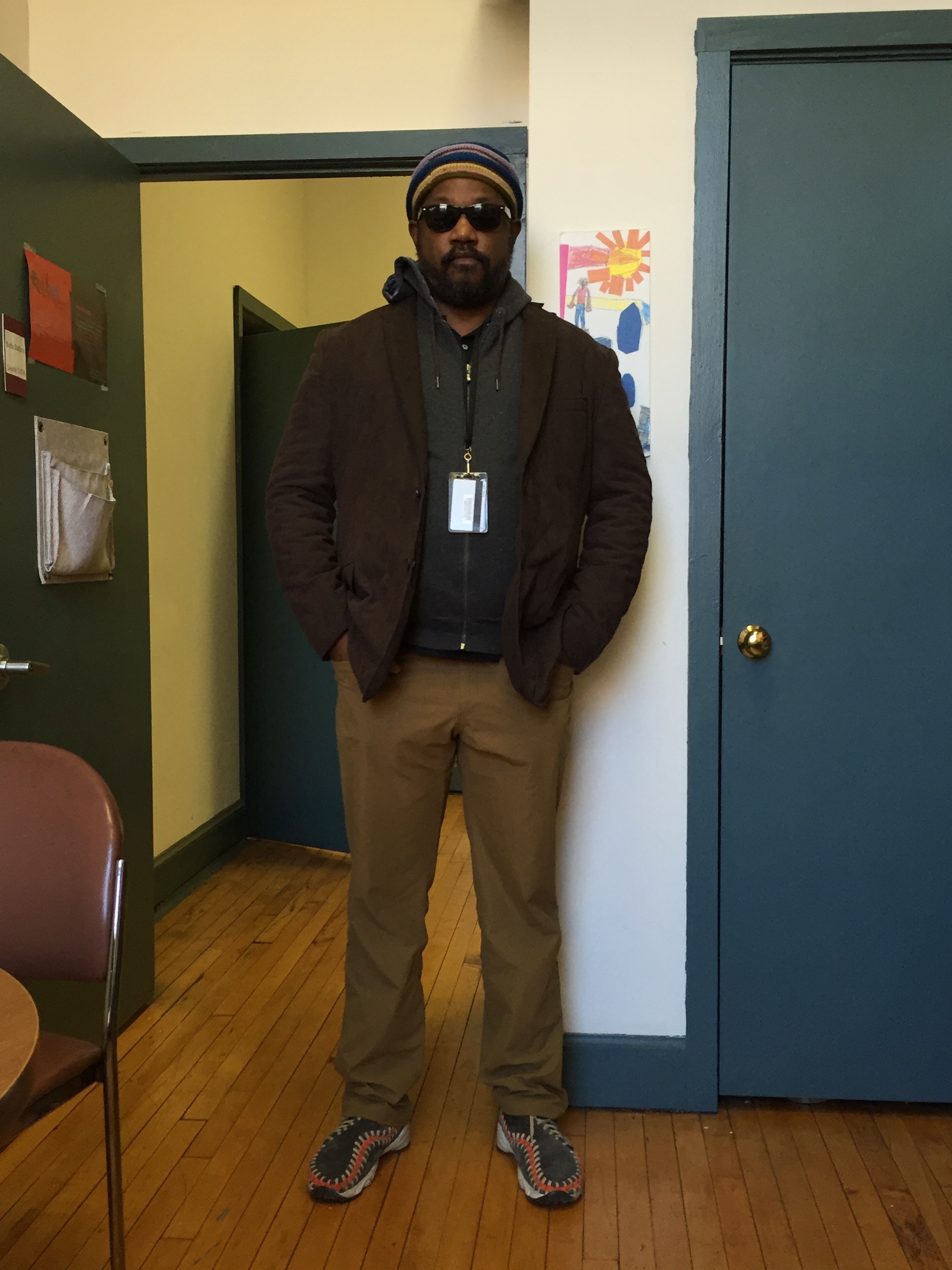You have /5 articles left.
Sign up for a free account or log in.

Byrd Stadium at U of Maryland
Wikimedia Commons
On many campuses, debates over race, racism and higher education -- which took off in October and November -- are continuing.
Among the latest developments: a plan to change the name of the football stadium at the University of Maryland at College Park, an art object at the University of Illinois at Urbana-Champaign that was originally viewed as an antiblack symbol of some kind and new demands for reform at Harvard University's law school.
No More Byrd Stadium
For many years, black students and others have urged Maryland's flagship campus at College Park to change the name of Byrd Stadium, which honors Harry Clifton (Curley) Byrd, who as president of the university from 1935 to 1954 oversaw a significant expansion of the campus and its programs. He was also an ardent segregationist, who opposed admitting black students and did so only under court order. He supported "separate but equal" policies to provide higher education for black students only at historically black colleges. And when there were programs available only at Maryland and not at the state's black colleges, he favored giving black students fellowships so they would enroll elsewhere.
A background document on Byrd prepared by a university panel that studied his history also noted that, when he ran unsuccessfully for governor, he campaigned as a segregationist. And he used "states' rights" arguments to oppose civil rights laws, arguing against federal antilynching statutes, for example, as they covered a topic he said states should decide.
 In recent years, Maryland has tried to add monuments and building names to campus that highlight black history. For example, just last month, the university added a statue of Frederick Douglass (at right), but students have made clear that those additions -- while welcome -- did not remove their concerns about Byrd Stadium.
In recent years, Maryland has tried to add monuments and building names to campus that highlight black history. For example, just last month, the university added a statue of Frederick Douglass (at right), but students have made clear that those additions -- while welcome -- did not remove their concerns about Byrd Stadium.
Wallace D. Loh, Maryland's president, announced Monday that he would ask the system's Board of Regents this week to authorize a new name for the stadium. Loh's announcement noted that Byrd contributed in significant ways to the university, and stressed that those acts still deserved recognition.
The university, Loh said, would honor Byrd in a library, and would also impose a five-year moratorium on renaming buildings. Loh noted that "to many African-American alumni and students, 'Byrd Stadium' -- the 'front porch' of the institution, not the most important part of the educational house, but the most visible one -- conveys a racial message hidden in plain sight. The name stands as a vivid and painful reminder that a generation ago they were unwelcome on this campus."
But Loh cautioned against judging Byrd or others by today's standards.
Said Loh: "History is not about the past. It concerns today's debates about the past. We must be wary of 'presentism' -- judging historical figures based on contemporary moral standards. It is unfair to fault them for not transcending the values of their time, even when we no longer subscribe to those values."
'I Fit the Description'
A blog post by Steve Locke, assistant professor at the Massachusetts College of Art and Design, describes his experience being detained by Boston police officers, and what it's like to be a black man whose very general physical description and status as a black man can be used by police to question him, in this case about a break-in. Locke describes the fear and humiliation of waiting for a group of police officers to realize that he's not a criminal, but a professor who had his college ID on a lanyard around his neck.
 The piece, "I Fit the Description," has gone viral. (The piece features the photo of Locke at right, which he published, dressed as he was when he was stopped.) To many black men, it describes a reality they face. And it shows how their college professor identities don't necessarily help them in encounters with law enforcement.
The piece, "I Fit the Description," has gone viral. (The piece features the photo of Locke at right, which he published, dressed as he was when he was stopped.) To many black men, it describes a reality they face. And it shows how their college professor identities don't necessarily help them in encounters with law enforcement.
"Something weird happens when you are on the street being detained by the police," he wrote. "People look at you like you are a criminal. The police are detaining you so clearly you must have done something, otherwise they wouldn’t have you. No one made eye contact with me.
"Nothing I am, nothing I do, nothing I have means anything because I fit the description," wrote Locke.
Lieutenant Detective Michael McCarthy told The Boston Globe that Police Commissioner William B. Evans was reaching out to Locke to discuss what happened. McCarthy said Locke was not mistreated and he praised Locke and the police officers for their conduct. “We understand that people may feel uncomfortable, and we would encourage them to be patient and to be respectful -- as this individual was,” McCarthy said. “The outcome can be as good as it was here.”
Sculpture Causes Alarm at Illinois
 At the Illinois flagship at Urbana-Champaign, students have been debating a sculpture (at right) that appeared on a campus quad and was seen by some as a sort of pro-Klan message designed to upset black students. Many took to social media to speculate that the sheet in the object was a response to a recent Black Lives Matter rally at the same location.
At the Illinois flagship at Urbana-Champaign, students have been debating a sculpture (at right) that appeared on a campus quad and was seen by some as a sort of pro-Klan message designed to upset black students. Many took to social media to speculate that the sheet in the object was a response to a recent Black Lives Matter rally at the same location.
It turned out that the object was a sculpture for an art class, and -- according to the university -- the object in question had nothing to do with race or the recent protests. (A spokesperson could not say if the sculpture was abstract or was intended to portray something.)
The university's grounds-and-facilities workers removed the sculpture because the students didn't have permission to leave it there. (They could have done so if they stayed, but they left.) So the removal was based on that rule, and not any judgment on the art, a spokesperson said.
While students have expressed relief, some have also said that the incident points to the need for art students and others to pay more attention to the way their actions may be perceived by minority students on campus.
Demands at Harvard Law
Black students at Harvard's law school have been holding a series of meetings with administrators. One of the students' original demands was to change the law school's seal, which is the family crest of an a major donor with ties to the slave trade. The law school is studying that issue.
The students have now presented the law school with a more extensive list of demands, including:
- The creation of "a critical race program at Harvard Law School … for students who are interested in challenging elite institutions and exploring the connections between the law and racial power." The program should have three tenure-track faculty members by 2020, and $5 million to launch the program.
- "Reform the existing mandatory legal curriculum at Harvard Law School, through meaningful student input and transparency, to ensure the integration of marginalized narratives and a serious study into the implications of racism, white supremacy and imperialism in creating and perpetuating legal analysis and thought."
- Change tuition and aid policies "to allow students to pursue a civic-minded career up front in exchange for free tuition, and to opt out and pursue a corporate-minded career in exchange for taking back their tuition debt."
Martha Minow, dean of the law school, on Monday wrote to all students and faculty members, praising the kinds of discussions that are taking place and vowing more reflection on the issues raised by recent protests. But Minow did not endorse (or reject) any of the proposals.
"Some students and staff have presented a list of demands," she wrote. "We are, however, a community of many voices and hopes, and we have an obligation to provide and protect the opportunity for all to participate, speak and be heard. We will work, as we always do, to seek broad input as we determine what kinds of reforms and actions will best promote our academic mission and build the community we aspire to be. Real institutional change requires the engagement of many members of our large and diverse community, and it depends on bringing about cultural change, in which we all have a stake."




